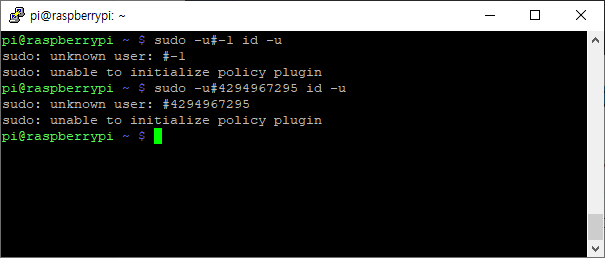

- CVE 2019 14287 EXPLOIT HOW TO
- CVE 2019 14287 EXPLOIT UPDATE
- CVE 2019 14287 EXPLOIT FULL
- CVE 2019 14287 EXPLOIT PASSWORD
- CVE 2019 14287 EXPLOIT WINDOWS
Moreover, there are other operating systems and distributions that are recommended by Sudo that are apparently also exploitable using CVE-2021-3156 exploits.
CVE 2019 14287 EXPLOIT FULL
And using all these exploits the security researchers were able to get full root privileges on various Linux distributions.Īll these distributions include Debian 10 (Sudo 1.8.27), Ubuntu 20.04 (Sudo 1.8.31), and Fedora 33 (Sudo 1.9.2). That’s why Qualys has produced three CVE-2021-3156 exploits to showcase how potential threat actors can successfully exploit this vulnerability.

CVE 2019 14287 EXPLOIT PASSWORD
However, Sudo before 1.9.5p2 has the heap-based buffer overflow, and it can be exploited by any local user, and here the attackers not being compelled to know the user’s password to exploit the flaw successfully. This vulnerability was revealed by the security researchers from Qualys, who revealed it on January 13th and made sure that all the patches are possible before going public with their conclusions. Sudo before 1.9.5p2 has a Heap-based Buffer Overflow, enabling all kinds of privilege escalation to root via “sudoedit with -s or -i flags” and provide a command-line argument that concludes with a single backslash character.
CVE 2019 14287 EXPLOIT UPDATE
Our best advice is to keep calm, and make sure you update your open source software components.It acts on the principle of most limited privilege, where the program provides enough permission to the people so that they can get their jobs done without negotiating the overall protection of the system. While Sudo is an extremely popular and widely used project, the vulnerability is only relevant in a specific scenario, and it has already been fixed in the updated version. In addition, as you can see, the Sudo vulnerability only occurs in a very specific configuration.Īs is often the case when newly disclosed security vulnerabilities in popular open source projects make a splash, there’s no need to panic. Stay Secure: Keep Calm And Update Your Sudo VersionĪnd now for some good news: the Sudo team has already released a secure version, so If you are using this particular security configuration, make sure to update to version 1.8.28 or over. In the example below, when we run the “-1” user ID, we get the id number “0” which is the root user value: Unfortunately, Joe Vennix from Apple Information Security found that the function fails to parse all values correctly and when giving the parameter user id “-1” or its unsigned number “4294967295”, the command will run as root, bypassing the security policy entry we set in the example above. This entry means that user jacob is allowed to run “chmod” as any user except the root user, meaning a security policy is in place in order to limit access - sounds good, right? Jacob myhost = (ALL, !root) /usr/bin/chmod The issue occurs when a sysadmin inserts an entry into the sudoers file, for example: That said, it’s also important to note that the vulnerability is relevant in a specific configuration in the Sudo security policy, called “sudoers”, which helps ensure that privileges are limited only to specific users.

That’s the scary version, and when we think about how powerful and popular Sudo is, CVE-2019-14287 should not be ignored. These 5 Principles Will Help You Survive. The security flaw could enable a malicious user to execute arbitrary commands as root user even in cases where the root access is disallowed.Ĭonsidering how widespread Sudo usage is among Linux users, it’s no surprise that everybody’s talking about the security vulnerability.Ī Rapidly Changing Digital World Drives AppSec Reinvention On October 14, the Sudo team published a security alert about CVE-2019-14287, a new security issue discovered by Joe Vennix of Apple Information Security, in all Sudo versions prior to version 1.8.28.

CVE 2019 14287 EXPLOIT WINDOWS
For example, it can be used by a local user who wants to run commands as root - the windows equivalent of admin user. Sudo is a program dedicated to the Linux operating system, or any other Unix-like operating system, and is used to delegate privileges. Why Is The New Sudo Security Vulnerability (CVE-2019-14287) Making Waves?
CVE 2019 14287 EXPLOIT HOW TO
Here is everything you need to know about the Sudo vulnerability, how it works, and how to handle the vulnerable Sudo component, if you find that you are currently at risk. Since vulnerabilities in widespread and established open source projects can often cause a stir, we decided to present you with a quick cheat sheet to let you know exactly what the fuss is about. Over the past few days, news of CVE-2019-14287 - a newly discovered open source vulnerability in Sudo, Linux’s popular command tool has been grabbing quite a few headlines.


 0 kommentar(er)
0 kommentar(er)
